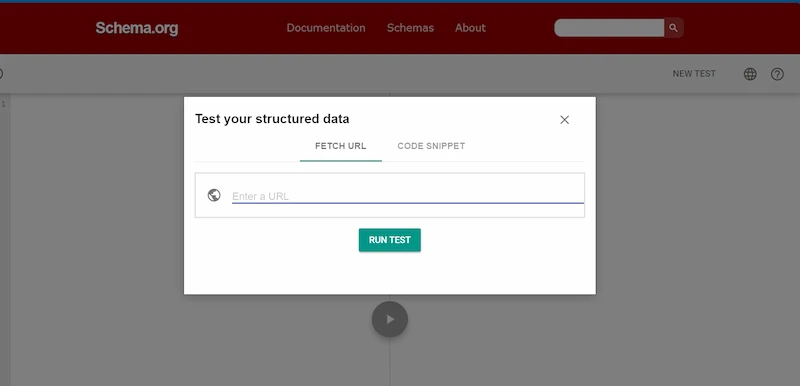Embracing Semantic SEO for Enhanced Search Visibility
In the past, SEO companies advised stuffing content with keywords to improve Google SERP rankings. The good news is that is no longer true today.
Keywords are not always grammatically correct. A page stuffed with keywords instead of insights isn’t helpful to someone looking for an answer.
Google’s preferences for ranking and positioning have changed over the years to fix this problem. Today, it favors content that is actually helpful to those searching for answers, giving them a higher position on SERPs. This shift towards semantic SEO is more focused on the meaning of the content. Your content should promote helpful information rather than nonsensical, keyword-ridden blog posts.
With the growing use of artificial intelligence (AI) in tech, semantic SEO is more important than ever. For instance, Google’s Natural Language Processing (NLP) is known for its advanced ability to gain insights and attitudes. This means useful content is critical to improve your ranking.
What is semantic SEO?
Semantic SEO refers to optimizing web content not just for specific keywords. You also need to make sure your content expresses the overall meaning and context keywords convey.
Instead of focusing solely on exact keyword matches, semantic SEO aims to understand user intent. Its goal is to deliver relevant, high-quality content that satisfies those intentions.
It involves utilizing related terms, synonyms, and natural language to create content that aligns with how people search and comprehend information online. This approach helps search engines better understand the context of web pages, resulting in improved rankings and a more satisfying user experience.
For search engines to understand the meaning and context of your content, you need to apply the key principles of semantic SEO:
Focus on user intent
Switch the focus of your content from keywords to topics, and always aim to understand user intent.
User intent is basically what users want when they search something on Google or any other search engine.
There are a few main types of user intent:
- Informational intent occurs when users seek answers or information, such as searching for a recipe to bake cookies.
- Navigational intent arises when users aim to reach a specific website or page, like typing “YouTube” into the search bar to access the site directly.
- Transactional intent signals readiness to purchase or take action, as seen when users search for “buy iPhone 12.”
- Lastly, commercial investigation intent denotes researching with potential buying intent, often seen in users comparing reviews for products like “best running shoes.”
Understanding user intent helps marketers create content and strategies that hit the mark. By knowing what people are really after when they search, we can give them exactly what they need, whether it’s answers, directions, or the perfect product. Plus, when we cater to user intent, it boosts engagement and can lead to more conversions, which is always a win!
Utilizing APIs like the Google Trends API can provide valuable insights into user intent trends, allowing marketers to tailor their strategies effectively.
Produce in-depth content
Imagine you’re searching for information on a topic you’re passionate about. You click on a link, hoping to find detailed insights and answers to your burning questions. Instead, you’re greeted with shallow, surface-level content that barely scratches the surface. Frustrating, right?
That’s where content depth comes in.
By creating content that delves into subtopics, explores related questions, and provides comprehensive coverage, you’re not just attracting visitors — but keeping them engaged and satisfied. Whether it’s a detailed guide, an in-depth analysis, or a comprehensive tutorial, deep content demonstrates expertise, authority, and trustworthiness —all key factors in Google’s ranking algorithm.
Adding context and richness for entity optimization
Entities are the building blocks of the web — people, places, things, concepts, and more. By optimizing your content around entities and their relationships, you’re providing valuable context that helps search engines understand the relevance and significance of your content.
Let’s say you’re writing for creative ad campaigns. By incorporating related entities like audience targeting, persuasive messaging, and visual storytelling, you’re painting a richer, more nuanced picture of the campaign. This enhances the impact and quality of your content and boosts its effectiveness in engaging your target audience.
Making sense of the content through structured data
Structured data is like a guiding light for search engines. By leveraging schema markup — a standardized form of structured data — you’re providing explicit clues about the meaning and context of your content.
Structured data can be applied to all content types to make it easier for search engines to understand and interpret. For example, if you run a recipe blog and use structured data, search engines can easily pull key details.
The cooking time, ingredients, and ratings can be displayed in rich snippets on the search results page. This not only makes your content more appealing but also helps users quickly find the information they need.
User experience
Last but certainly not least, user experience (UX) is pivotal in SEO success.
A well-structured website is the foundation of a positive user experience. You can do this through intuitive navigation and mobile responsiveness. Fast loading times and engaging multimedia are also other ways to improve user experience.
By prioritizing user engagement and satisfaction, you are signaling to search engines that your site is worthy of attention. This can lead to higher rankings, increased organic traffic, and, ultimately, more conversions and revenue.
Implementing semantic SEO strategies
If you want to stay competitive, you need to implement SEO strategies in your content.
All search engines have a vast database of information to choose from. When you use semantic SEO strategies, you prioritize relevance. This improves the chances that your website will be chosen as an authority in your domain.
Work with your digital marketing team to develop a sound semantic SEO guidelines and follow these strategies:
- Keyword research: The bedrock of any SEO strategy is keyword research. Remember to dive deeper into related terms, questions, and topics that revolve around your target keywords.
Tools like Google’s Keyword Planner, Nightwatch, and AnswerThePublic can help uncover valuable insights into searcher intent and behavior.
- Content creation: Gone are the days of standalone blog posts and isolated landing pages. Embrace the concept of topic clusters — groups of interlinked content pieces centered around a core topic or theme.
- On-Page optimization: Optimize your on-page elements — titles, headings, meta descriptions, and content — with relevant terms and entities.
Instead of stuffing keywords unnaturally, aim for a natural, conversational tone that aligns with user intent.
Incorporate semantic variations and related terms to enrich your content and provide comprehensive coverage of the topic.
- Internal linking: Internal linking connects pages within a website, enhancing navigation and providing easy access to related content.
Forge a strong internal linking structure that connects related content within your website.
- External linking: Seek out backlinks from high-quality websites that are relevant to your target topics.
High-quality sources offer reliable information and add value to your digital presence. Meanwhile, poor-quality sources may lack credibility or relevance, potentially undermining your reputation and SEO efforts.
External linking can bolster your credibility and authority in the eyes of users and search engines. Focus on building meaningful relationships and providing value to others in your digital ecosystem.
- Technical SEO: Technical SEO ensures that a website’s infrastructure is optimized for search engines.
To do this, ensure your website is technically sound, starting with mobile-friendliness and fast loading times.
A responsive design and optimized performance are non-negotiable in today’s mobile-centric world.
Also, pay attention to proper technical structuring, including clean URL structures, XML sitemaps, and schema markup. These facilitate seamless crawling and indexing by search engine bots.


Use advanced techniques & tools
To truly dominate the search results, you need to leverage advanced techniques and cutting-edge tools that harness the power of semantic analysis. Here’s how:
- Topic modeling: Topic modeling is a technique that uses artificial intelligence to analyze large datasets and identify relevant topics and themes.
Understanding the underlying topics and themes can help you create content that resonates with your target audience.
IBM’s Watson’s Natural Language Understanding and Google’s Cloud Natural Language API can help you uncover hidden insights in your content and identify new opportunities for optimization.
- Competitor analysis: Your competitors can be a treasure trove of insights when it comes to semantic SEO. By studying how your competitors leverage semantic SEO techniques and identifying gaps and opportunities, you can refine your own strategy and gain a competitive edge.
Tools like Nightwatch can help you analyze your competitors’ content, backlink profiles, and keyword strategies. These insights can help you understand how you can improve your own efforts.
- Knowledge graph optimization: One of the most powerful tools in Google offers is the Knowledge Graph — a massive database of interconnected entities and relationships. Make sure to align your content with entities in the Knowledge Graph. This way, you can increase your chances of appearing in featured snippets and other rich SERP features.
Tools like Google’s Structured Data Testing Tool and Schema.org can help you mark up your content with relevant schema markup while also providing insights into how Google understands and interprets your content.


Measure success & ROI
Tracking key metrics and analyzing data are essential to gauging the effectiveness of your strategies and maximizing return on investment (ROI). Here’s how you can measure success and track ROI:
Track key metrics
- Traffic: Monitor overall website traffic, as well as organic traffic specifically, to gauge the impact of your semantic SEO efforts on driving visitors to your site.
- Organic rankings: Keep an eye on your website’s rankings for target keywords in search engine results pages (SERPs), tracking both improvements and declines over time.
- Keyword rankings: Track the performance of individual keywords targeted in your semantic SEO strategy, noting fluctuations and trends in rankings.
- Engagement metrics: Measure user engagement metrics such as bounce rate, time on page, and pages per session to assess the quality of traffic and the effectiveness of your content.
- Conversions: The bottom line of any SEO effort is conversions. Track conversion metrics such as lead generation, sales, sign-ups, or any other desired actions taken by visitors on your site.
Analyze search console & analytics data
- Google Search Console: Utilize Google Search Console to gain insights into how your website is performing in Google’s search results, including impressions, clicks, click-through rates (CTRs), and more.
Identify opportunities for improvement and address any issues affecting your site’s visibility.
- Analytics platforms: Dive deep into analytics data from platforms like Google Analytics to understand user behavior, traffic sources, demographic information, and content performance. Identify high-performing pages, top-performing keywords, and areas for optimization.
A/B test different approaches
A/B testing empowers SEO experts to experiment with various website elements, such as headlines or call-to-action buttons. This helps determine what resonates best with users, optimizing conversion rates and enhancing search engine performance.
- Experiment with different semantic SEO strategies and approaches through A/B testing to identify what works best for your website and audience.
- Test variations in content structure, keyword targeting, meta tags, internal linking strategies, and other optimization techniques.
- Continuously monitor and analyze the results of A/B tests to refine and optimize your semantic SEO strategies over time.
Stay relevant on search engines with semantic SEO
In conclusion, embracing semantic SEO is imperative for boosting your website’s traffic and staying relevant on search engines.
Following the SEO strategies in this guide can enhance your website’s visibility and authority in the digital landscape.
Remember to use competitor analysis and an established rigorous measurement of success.
You need to continually refine and optimize your semantic SEO strategy to drive sustainable growth for your online presence.
Author bio:
Professor Imed Bouchrika, PhD is the chief data scientist contributing to the foundation of the academic research portal Research.com, specializing in data scientist career path development and academic research.
